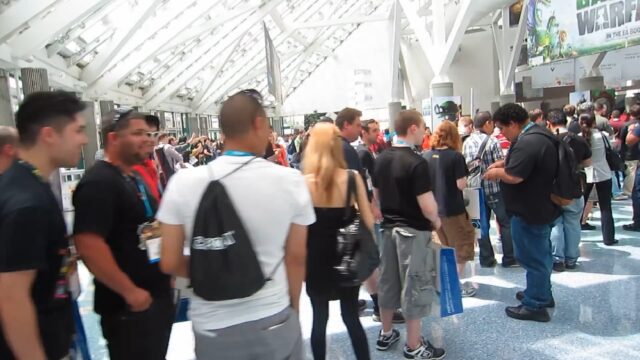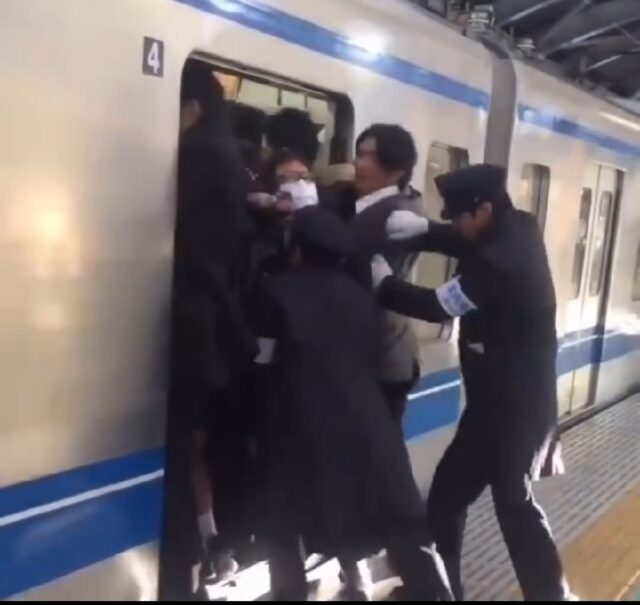Definition:
“Queuing” refers to the process of forming and waiting in a line or sequence to receive a service, purchase goods, or gain access to a place.
Etymology:
The term “queuing” comes from the French word “queue,” meaning “tail,” which in turn derives from the Latin word “cauda.” The concept is related to the idea of people or objects forming a line similar to a tail.
Description:
Articles:
Shopping
Definition: “Shopping” is the activity of browsing and purchasing goods or services from retailers. It involves the process of selecting, evaluating, and acquiring products or services to fulfill personal or…
Traffic
Definition: “Traffic” refers to the movement of vehicles, pedestrians, and animals along roads, streets, and pathways. It includes the flow of cars, trucks, bicycles, and other modes of transportation, as…
Herd Mentality:
Standing in line is a classic example of herd mentality, where individuals follow the behavior of others around them based on social norms, perceived benefits, and psychological comfort. While it often ensures fairness and organization, it also highlights how people can be influenced by the actions of the majority, sometimes without fully understanding the rationale behind it.
Every time the first in line finishes, the next person takes a step forward, and then everyone else follows. They don’t do this because they care about not blocking people who are shopping. This happens regardless of whether the line is positioned so that no one is blocked and regardless of how few people are in line. This happens for silly reasons like believing it goes faster the closer they get to the counter, and fearing that someone else will jump in front of them in line because they think you’re not in line since you’re not standing right behind the person in front of you. The same applies in traffic when people are stuck in rush hour. People brake and release their brakes every other second.
The phenomenon of people standing in line for no apparent reason is a curious example of herd mentality and social behavior. There is a video of people standing in line at Electronic Entertainment Expo (2013) for no reason. The man who recorded the video described the situation as: “We witnessed what appeared to be a few people hanging out waiting comfortably to get into the show. Some people lined up behind them, and then a giant line formed. People at the back of the line assumed they had to wait in this long line.” Click to watch the video clip.

Standing in line for premieres, whether for movie releases, product launches, or exclusive events, is a common occurrence. This behavior is often driven by herd mentality, where individuals follow the actions of a larger group without necessarily making independent decisions. The fear that tickets, products, or spots might sell out quickly drives people to line up early, not understanding that if something sells out, it is very likely to be back in stock soon. It would, of course, save one a lot of trouble to just wait until the hype is over before getting the product or attending the event. The sense of urgency is heightened by the visible presence of others already waiting. Being among the first to experience a new movie, product, or event can be seen as a status symbol, reinforcing the desire to participate. The more people that join the line, the more attractive the activity becomes, leading to a snowball effect where the crowd draws in even more participants.
Standing in line for the release of a new iPhone has become a well-documented and globally recognized phenomenon. This practice involves people queuing up, sometimes for days in advance, outside Apple stores to be among the first to purchase the latest iPhone model. Many people who stand in line are passionate about technology and want to be among the first to experience the latest advancements. They often enjoy the excitement and social aspect of the event. The media frequently covers these events, which can add to the excitement and sense of importance. News reports, social media posts, and live streams can amplify the event, attracting even more people to join the line. There is a news report by CNET documenting the the Apple iPhone 6 line outside the Apple Store on Fifth Avenue in Manhattan (2014). Click to watch the video.

Most people who don’t live in rural areas have the opportunity to return to a grocery store if it’s too busy. But the vast majority of people don’t seem to even consider the option. Instead they wait in very long lines during rush time. Click to watch a video.

Selfish behavior, particularly when it comes to fighting to get first in line, is common in many situations, such as public transportation or getting in an elevator. This behavior is often driven by individual desires to secure a perceived advantage, but it is also influenced by herd mentality. The fear of not getting a seat or missing the bus/train can drive people to act quickly and aggressively. This fear is amplified when they see others doing the same. Even when there are established lines, individuals may ignore them and try to cut in front, especially as the bus or train arrives. It is very common at airports when they start boarding the plane; they announce that group 1 should board first, then group 2 can line up behind, followed by group 3. But as soon as they say this, groups 2 and 3 immediately gather, blocking group 1. In the vast majority of instances, none of them care if there are people with disabilities who need to board.
In extremely overpopulated places such as certain cities in India, they suffer every day from the problem of hundreds of people pushing and shoving each other to get on and off the train, and the cities don’t seem to implement more trains to solve the problem. Click to watch a video clip.

The herd mentality behavior of people trying to reserve a spot on public transportation can be so intense that they do not let people off before entering. If they did, there would be space for more passengers, which would benefit the herd. Click to watch a video clip.

In certain places, they do not follow any rules regarding how many people can fit into a bus or train. There is a video that demonstrates how they squish an extreme number of people into a bus in India. Click to watch the video clip.

There is also a video that demonstrates how train conductors squish people into trains in Tokyo, Japan. Click to watch the video clips.

In places like Bangladesh, there are so many people that they ride on the roof or hang on the side of trains when the inside is full. Click to watch a video clip.

When a plane lands, the flight attendant always says, “Please remain seated until the seatbelt sign is turned off.” Every time, as soon as the seatbelt sign is turned off and there’s a ding sound they interpret as a go-signal from the authority (the pilot), as many passengers as possible stand up and wait in the aisle for at least 15 minutes to get off the plane instead of remaining seated until they open the door and start letting people out. Many passengers want to be the first to exit the plane, especially if they have connecting flights, tight schedules, or just a general desire to reach their destination quickly. However, mostly they just want to be first for no particular reason. When passengers stand up and crowd the aisle, it tends to cause delays as it becomes more difficult to access their carry-on luggage from the overhead bins. Click below to listen to a sound recording from a Norwegian plane, where the ding sound occurs before click sounds from the passengers unfastening their seatbelts. The recording includes a young girl saying “Finally” in Norwegian, highlighting the impatience of the passengers.
At the airport baggage claim, every passenger crowds around the conveyor belt, blocking those behind them from getting their luggage. Instead of keeping a distance so everyone can see the bags as they come and allowing those who spot their luggage to retrieve it and then move out of the way for others, the rows behind have to wait for the first row to clear before they can begin to collect their baggage.
There are several instances where people’s laziness drives them to stand in line, rather than do a tiny amount of work themselves to get done faster. For example, waiting in line to take the elevator when it is much faster to take the stairs, or even the escalator, which doesn’t even require extra effort. Now that self-checkout registers have become much more common in grocery stores, it often happens that the majority of people still choose to wait in long lines for assisted checkout, instead of using the self-checkout which can be completely empty. The majority of people also tend to park their car as close to the entrance as possible, to save their feet from walking a few extra steps. This results in a cluster of cars around the entrance waiting to park or leave.
